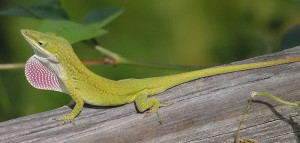 Crawling all over the Everglades’ trees and floors are reptiles. More than 50 distinct kinds of reptiles live in the Park. The Park’s most well-known reptiles are, of course, the American alligator and the American crocodile, but there’s plenty of other scaly creatures running around, including the very tiny green anole (anolis carolinensis).
Crawling all over the Everglades’ trees and floors are reptiles. More than 50 distinct kinds of reptiles live in the Park. The Park’s most well-known reptiles are, of course, the American alligator and the American crocodile, but there’s plenty of other scaly creatures running around, including the very tiny green anole (anolis carolinensis).
The green anole is native to Florida. In fact, this anole is the only native anole in the United States. The anole is found in warm, humid climate, so mostly in southeast United States. This tiny lizard can change from brown to green as it blends and camouflages to its surroundings. They can change colors in mere seconds. They are known to change colors when under stress, also. They have a red throat pouch, as well. When the male anoles, lift their heads and make their red pouches protrude, they are either attracting a mate or marking their territory to other male anoles.
These green anoles only grow to a maximum length of 8 inches. Both male and females have oversized toes for traction; they have adhesive toe paid and claws, which also make climbing easy. They have a long snout, slender body, and have a lightly patterned coloration on their backs and tails. They are known to aggressively defend their territories.
Their mating season is between April and July. The females can lay one egg each week throughout the four month mating season. It takes the eggs 35-40 days to hatch. Baby anoles have to defend themselves, after hatching. The green anoles eat insects, spiders, and moths; they swallow their prey whole. The anole’s lifespan is around 5 years.
Green anoles can be found on trees and all habitats around the Everglades. They are also a common house pet.
Green anoles have been studied a lot to help with scientific research to help understand other behaviors in animals, as well as neurological disorders and drug delivery systems and biochemical pathways in regard to human illnesses.
Want to spot a green anole in the wild? You may get your chance on an Everglades airboat tour. Come out today and experience the magic of the Everglades with Captain Mitch’s Airboat Tours. To book an airboat ride, click here or call 800-368-0065.
Photo courtesy: wikimedia
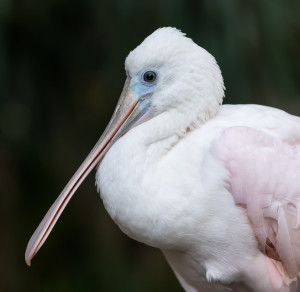 During the winter season, Florida can look like a scene out of Jurassic Park. The sheer scale and variety of birds flocking down here is a sight to be seen. Hundreds of birds of varying species stand side by side bodies of water and make the area their home for the winter/nesting season. One bird that can be spotted in southern Florida is the roseate spoonbill, and it happens to be a threatened species.
During the winter season, Florida can look like a scene out of Jurassic Park. The sheer scale and variety of birds flocking down here is a sight to be seen. Hundreds of birds of varying species stand side by side bodies of water and make the area their home for the winter/nesting season. One bird that can be spotted in southern Florida is the roseate spoonbill, and it happens to be a threatened species.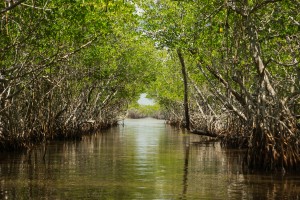 How much do you know about the Everglades? Even though this area is a National Park, the average person may not know a lot of details about this wetland, especially if they do not live near it. In the national news, people are hearing about the Everglades restoration, but may not know a whole lot about the Park itself and its importance to the ecosystem of the area. The Everglades is a truly mystical place, so we wanted to share with you some fun, interesting, and maybe even little-known facts, about it.
How much do you know about the Everglades? Even though this area is a National Park, the average person may not know a lot of details about this wetland, especially if they do not live near it. In the national news, people are hearing about the Everglades restoration, but may not know a whole lot about the Park itself and its importance to the ecosystem of the area. The Everglades is a truly mystical place, so we wanted to share with you some fun, interesting, and maybe even little-known facts, about it.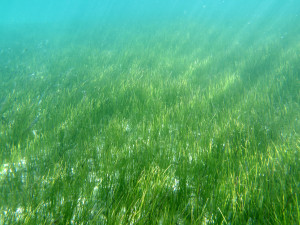 You might know that there’s a lot of seagrass around Florida and throughout the Everglades.; there’s 7 kinds of seagrass in Florida to be exact. But, did you know that this seagrass is dying? Much of the beautiful green, flowering seagrasses in the waters of the Everglades are turning brown and dying off. Last year, National Park Service researchers discovered a 40,000-acre section of seagrass in Florida Bay that is dying. Seagrass provides food and shelter for many different species for marine life, while also maintaining water quality. If this grass dies off, animals, fish, and even humans will be impacted negatively.
You might know that there’s a lot of seagrass around Florida and throughout the Everglades.; there’s 7 kinds of seagrass in Florida to be exact. But, did you know that this seagrass is dying? Much of the beautiful green, flowering seagrasses in the waters of the Everglades are turning brown and dying off. Last year, National Park Service researchers discovered a 40,000-acre section of seagrass in Florida Bay that is dying. Seagrass provides food and shelter for many different species for marine life, while also maintaining water quality. If this grass dies off, animals, fish, and even humans will be impacted negatively.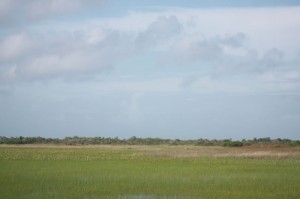 The rest of us may have four seasons (Spring, Summer, Fall, and Winter), but did you know the Everglades only has two seasons? The Everglades seasons don’t go by the temperature, but rather the water levels in the wetland. The two seasons are known as: the Wet Season and the Dry Season.
The rest of us may have four seasons (Spring, Summer, Fall, and Winter), but did you know the Everglades only has two seasons? The Everglades seasons don’t go by the temperature, but rather the water levels in the wetland. The two seasons are known as: the Wet Season and the Dry Season.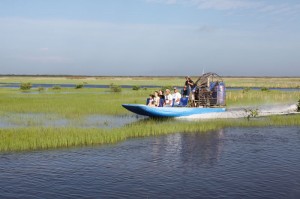 Airboats are one of the most exciting, up-close-and-personal ways to get around the Everglades. They give visitors a chance to see the wetland’s vastness, along with its flora and fauna. Airboats are a safe way to glide through the waterways, but like anything there are risks. Airboat injuries and accidents have occurred, so it is important as a passenger you follow all safety precautions and rules.
Airboats are one of the most exciting, up-close-and-personal ways to get around the Everglades. They give visitors a chance to see the wetland’s vastness, along with its flora and fauna. Airboats are a safe way to glide through the waterways, but like anything there are risks. Airboat injuries and accidents have occurred, so it is important as a passenger you follow all safety precautions and rules.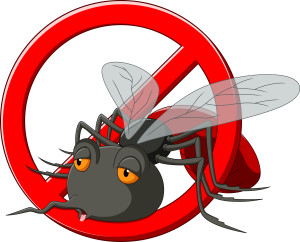 A visit to the Everglades is a once in a lifetime experience. In the Everglades, you get to see a unique ecosystem that is unlike anything else in the United States. It is a diverse and abundant ecosystem that is an excellent place for the avid nature enthusiast and bird watcher alike.
A visit to the Everglades is a once in a lifetime experience. In the Everglades, you get to see a unique ecosystem that is unlike anything else in the United States. It is a diverse and abundant ecosystem that is an excellent place for the avid nature enthusiast and bird watcher alike.





